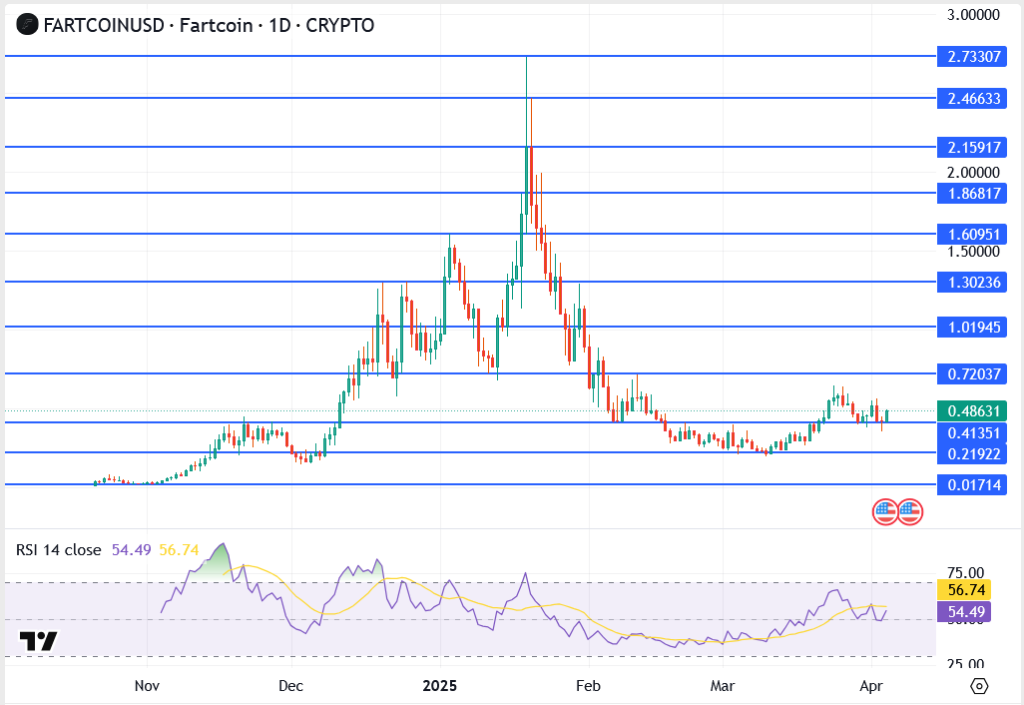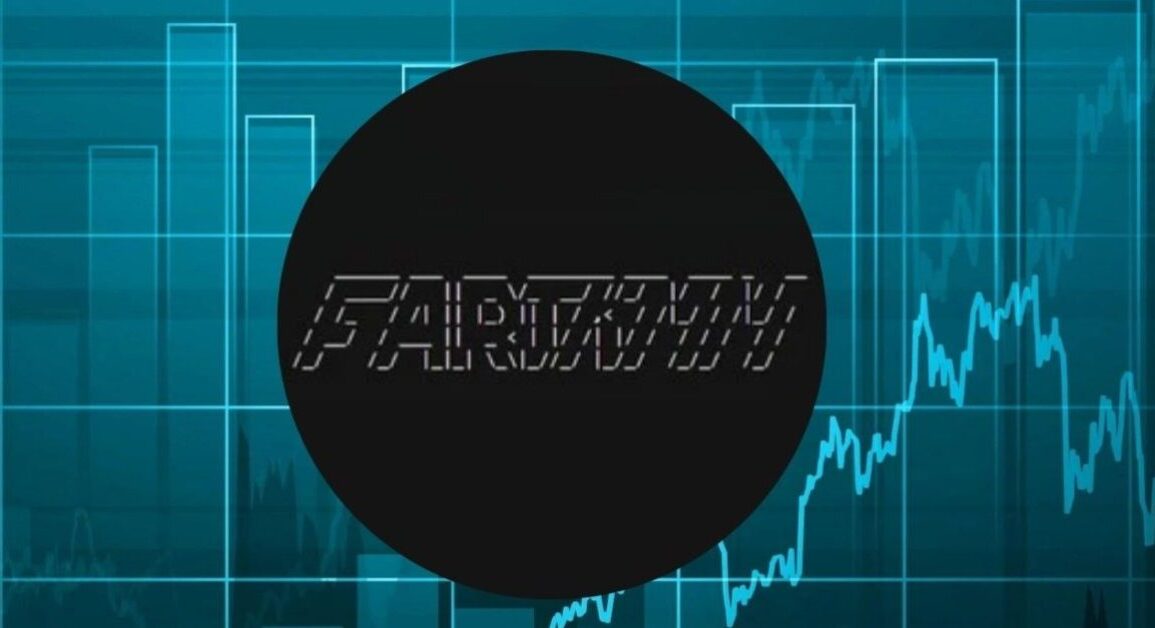Table of Contents
Fartcoin Gains Traction as Retail Traders Flock to Trending Token
Fartcoin (FARTCOIN), one of the most searched cryptocurrencies over the last 24 hours, is back on the radar of speculative traders and meme coin enthusiasts. After a parabolic rise and subsequent correction earlier this year, FARTCOIN is now stabilizing above the $0.40 level, trading at $0.4863 as of April 4, 2025.
With renewed momentum and rising community engagement, Fartcoin appears poised for a potential breakout—once again capturing attention across social media, Reddit crypto forums, and Google Trends.
Fartcoin Price Action: Chart Analysis
Resistance Levels:
Current Price: $0.4863
- $0.7203 – Short-term breakout target
- $1.0194 – Psychological barrier and former support
- $1.3023 – Mid-range target from Jan 2025 rally
- $1.8681 – High-volume node
- $2.7331 – Cycle peak resistance
Support Zones:
- $0.4135 – Immediate support zone
- $0.2192 – Accumulation base before breakout
- $0.0171 – Historical floor, extreme bear zone

Why Is Fartcoin Trending?
Social Media Virality:
Fartcoin continues to dominate Twitter and TikTok feeds thanks to its absurdist branding, meme potential, and cult following.
Retail Speculation:
Traders are rotating into low-cap meme coins amid sideways BTC movement, seeking high-risk, high-reward opportunities.
Google Search Spike:
Fartcoin became one of the top-searched altcoins globally in the last 24 hours, outperforming major L1s in online visibility.
Meme Coin Rotation Season:
As Dogecoin, Shiba Inu, and PEPE cool off, newer meme coins like FARTCOIN are taking the spotlight with faster upside potential.
Investor Sentiment: High Risk, High Entertainment
Fartcoin isn’t pretending to be the next Ethereum. It thrives purely on speculation, meme energy, and virality—yet its short-term technicals show genuine structure.
Still, traders should approach with caution. Extreme volatility, shallow liquidity, and lack of fundamental utility mean FARTCOIN can swing 30–50% in hours. Position sizing, tight stop-losses, and risk management are critical.


